Hello, darlings!
Miss Windsor excitedly presents Mrs Beeton’s Traditional British Christmas Pudding recipe – a frightfully fruity, remarkably rich, temptingly moist, and abundantly boozy classic festive dessert, which I discovered buried deep within my culinary bible – the 1906 edition of Mrs Beeton’s Book of Household Management – page 939, to be exact.
And I must say, what thrill it was, although rather laborious, to step back in time to the late 1800s and recreate an age-old recipe following traditional methods. Therefore, with a whole day set aside, and with my great-great-grandmother Georgina in mind, I wished to experience the joys of a Victorian 19th-century cook, slogging away in the kitchen preparing for the Christmas Day feast – well, so far, just the Christmas pudding!
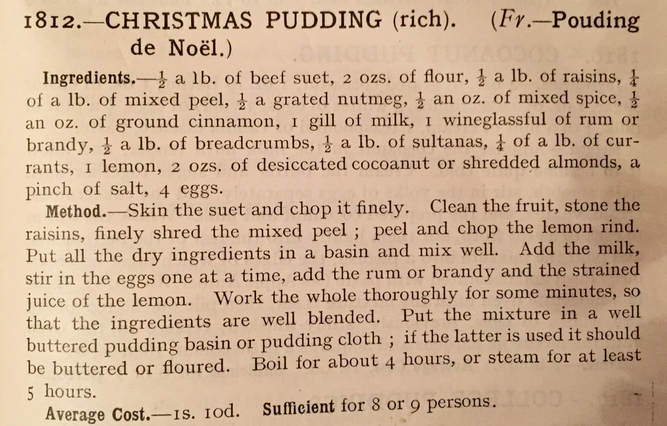
I dare say, darlings, my great-great-grandmother Georgina would’ve whipped up an abundance of Christmassy creations in her quaint Somersetshire kitchen, including a stonker of a Christmas pudding, to be devoured on Christmas Day by her beloved husband Henry and their gaggle of 9 children. By Jove! Georgina must’ve had the patience of a saint as Christmas puddings take around 4 to 5 hours to steam!
Now, a little history lesson about the world-famous Christmas pudding. It originates from England and began life in the 14th century as a pottage called “frumenty”, which was a kind of broth type soup made with beef/mutton, wine, spice, and fruit. Then it evolved over the years until the Victorians referred to it as plum pudding, or by the common title of Christmas pudding – please note: plums refer to raisins or any kind of dried fruit.
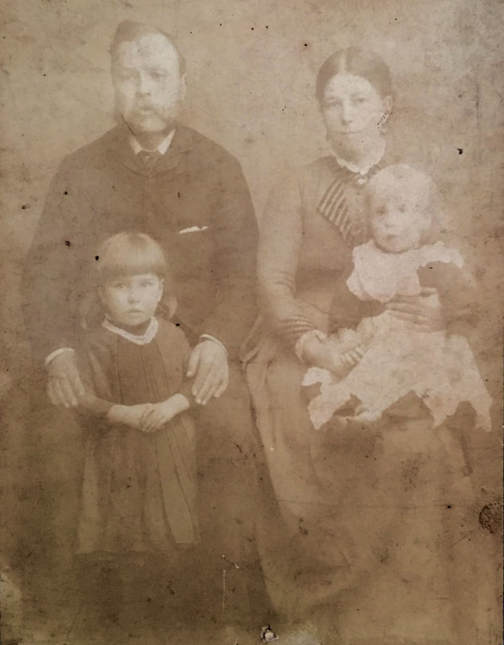
Also, did you know that Victorian Christmas puddings, or maybe before such era, were made with chopped beef suet, mixed fruit, spices, candied peel, and so on? I say, nor did I, until I carried out some thorough research. Therefore, I discovered there are many recipes out there for Christmas pudding – some require sugar, maybe an egg or four, a hunk of butter, lemon juice, nuts, honey, and of course, a wineglassful of rum or brandy.
Darlings, in addition to one wineglassful of rum, it was my intention to recreate an exceedingly rich and moist version of Mrs Beeton’s Christmas pudding, so I roughly chopped the dried fruit, then soaked it for a week (few days will suffice) in dark Lambs Navy Rum. I say, thank goodness for Alfred Lamb who in 1849 created this exquisite alcoholic beverage with no fewer than 18 rums from Jamaica, Barbados, Trinidad and Guyana.
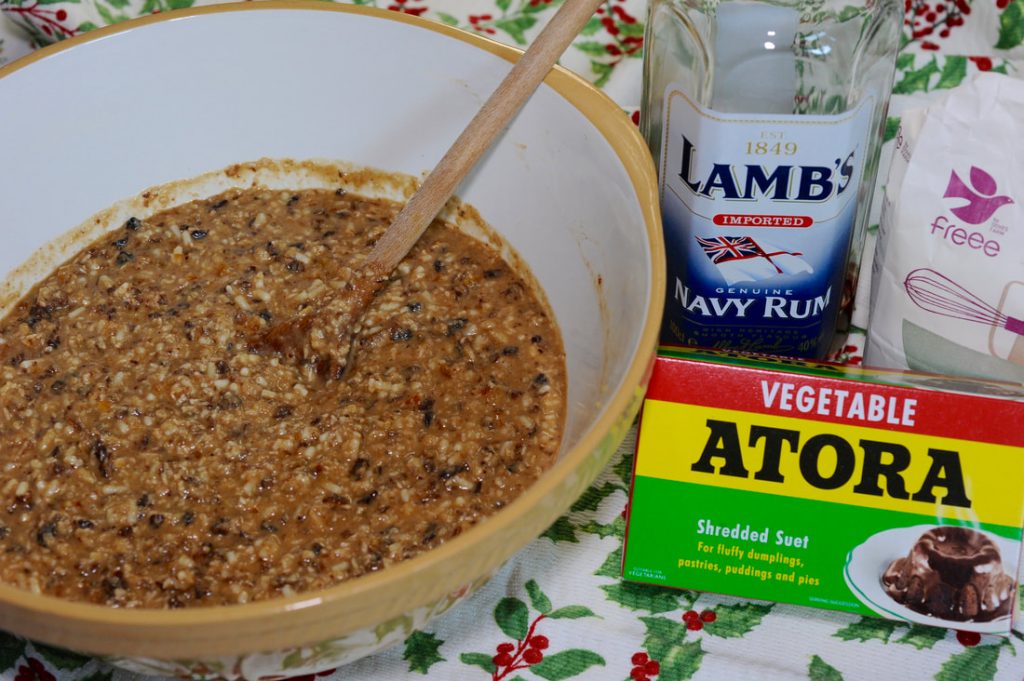
I then added dark brown sugar, in fact, the original version called for no sugar at all, and I also opted for brown breadcrumbs instead of white.
You see, I believe all these additions actually deepen the colour and prevents your pudding from looking rather “anaemic”! Oh, and I must state, following a Victorian yet religious tradition one should make their Christmas pudding on the last Sunday before Advent begins, but a couple of weeks before Christmas day will suffice!
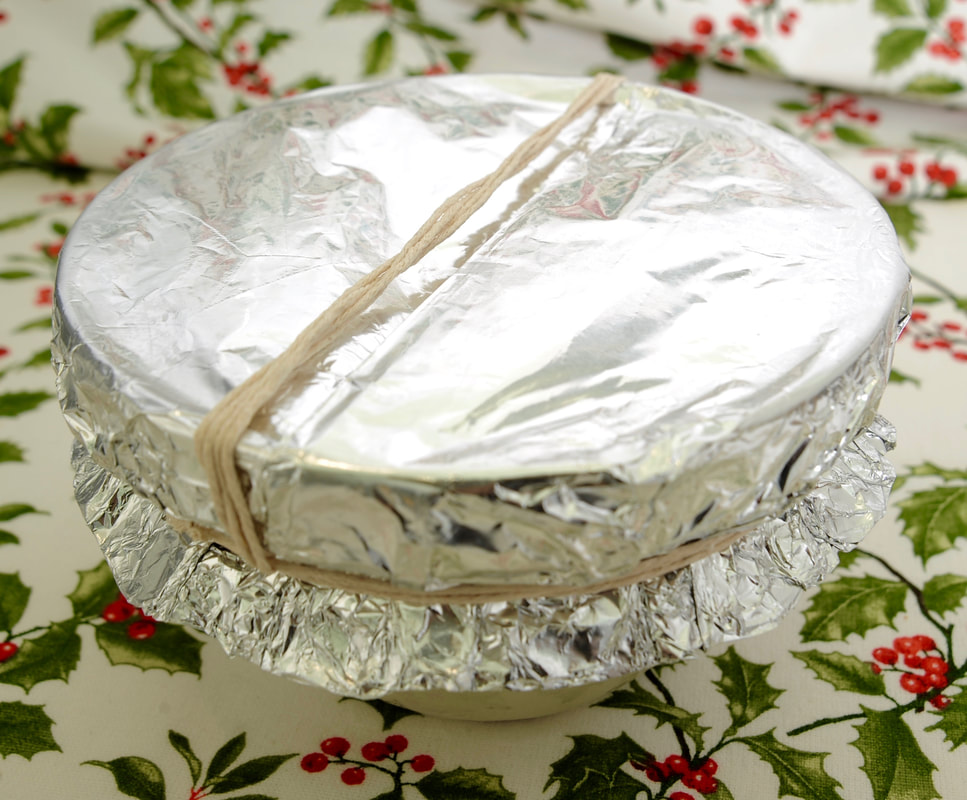
Oh, dear! I expect some of you are wondering what the heck is Stir-Up Sunday? In brief, it’s a special time when family gather together and take it in turns to stir the pudding mixture, whilst making a wish for the year ahead. Traditionally charms were added such as a silver coin which represents wealth – and there you have it!
So, before you have a jolly ol’ go at recreating this heavenly pud, Miss Windsor suggests you make two generous sized puddings, instead of an extra-large one as Mrs Beeton recommends that would feed a ginormous family of ten!
Therefore, serve one this year, then having spoon-fed your second pud with dark rum or brandy all year round, it will have matured by intensifying the flavours, thus improving the texture in readiness for your next festive knees up.
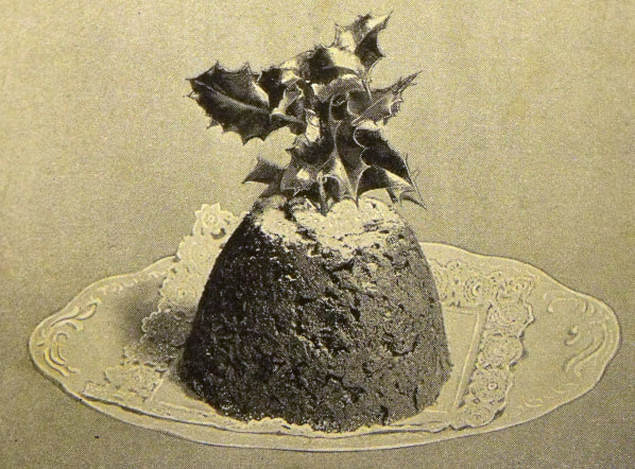
Before I forget, if you belong to the health-conscious society, that being you’re gluten-free or a lacto-ovo-vegetarian (this type can eat eggs) then one may opt for vegetable suet, gluten-free flour, gluten-free breadcrumbs – or one may use ground almonds instead – voila! And just for the record, I have experimented with all of the above, and although it turned out slightly paler in colour, it was indeed a culinary triumph!
By the way, at present, our trusty British household name of Atora has not created a gluten-free type of suet. However, I’ve carried out a bit of research and luckily I discovered a gluten-free/vegetarian suet by WWW.NATURALLYGOODFOOD.CO.UK.
Darlings, please do enjoy every mouthful with a drop or two of brandy butter, thick cream or Birds custard!
Miss Windsor x
ALL PHOTOGRAPHY BY MISS WINDSOR

Mrs Beeton’s Traditional British Christmas Pudding!
Ingredients
- large bottle of dark rum / brandy (to soak the fruit)
- 220 g (1 & 3/4 cups) dried raisins
- 220 g (1 & 3/4 cups) dried sultanas
- 120 g (1 cup) dried currants
- 225 g (3 & 1/2 cups) fresh brown breadcrumbs
- 60 g (3/4 cup) desiccated cocoanut
- 120 g (3/4 cup) roughly chopped mixed peel
- 60 g (1/2 cup) self-raising flour
- 220 g (2 cups) beef or vegetable suet
- 150 g (1 cup) dark brown sugar
- ½ grated nutmeg
- ½ heaped teaspoon mixed spice
- ½ heaped teaspoon ground cinnamon
- pinch of salt
- 142 ml (5 fl oz) whole fat milk
- 4 eggs – lightly beaten
- juice of 1 lemon
- 1 wineglassful of dark rum
Instructions
-
First off, roughly chop all the dried fruit and soak in any dark rum or brandy for about one week – if pushed for time a few days will suffice.
-
Using a sieve drain the rum soaked fruit and set to one side.
-
Prepare your breadcrumbs by using a food processor or similar implement, then transfer to a large mixing bowl.
-
Add desiccated cocoanut, mixed peel, self-raising flour, suet, dark brown sugar, nutmeg, mixed spice, ground cinnamon, a pinch of salt, rum soaked fruit, milk, lightly beaten eggs, lemon juice, and a wineglassful of rum – Oh, and do save a drop for yourself!
-
Darlings, using a wooden spoon mix all the ingredients together – go on and ‘give it some welly'!
-
Reach for a large saucepan, and place an old saucer on the bottom (this will prevent the basin from cracking) then fill with water, about half-way up the basin, and immediately put on to boil.
-
Now, take two pudding basins or an extra large one. Grease well with butter, and three-quarters fill with the mixture.
-
Time to prepare the basins for steaming. Cut a large piece of greaseproof paper and foil. Place the foil piece on the kitchen counter followed by the greaseproof paper on top, then lightly grease with butter.
-
Holding both pieces, make a pleat in the centre – this will allow space for the pudding mixture to rise.
-
Gently place over the basin and mould it around the edges.
-
Using a large piece of string, tightly wrap it around a few times under the ‘lip’ of the basin, and secure with a knot or two.
-
Make a handle by threading the string from one side to the other a few times. Again, secure with a knot or two.
-
Trim off the excess paper/foil, then tuck both layers under neatly – making an extra water-tight skirt.
-
Now the water is boiling, using the handle, place the basin gently into the saucepan and cover with lid.
-
Darlings, make sure you regularly top up with water, as you wouldn't want your Christmas pud to boil dry!
-
After approximately 3- 4 hrs (2-pint basin) or 4-5 hrs (family size basin), Miss Windsor recommends checking if they’re cooked. Insert a skewer right through the foil/paper layer. If it comes out clean it’s ready, if not keep steaming for a while longer!
-
Once cooked, allow to completely cool. Prick all over with a skewer and spoon feed with dark rum or brandy.
-
Then cover with a layer of greaseproof paper and foil, tightly secure with string, and store in a cool dark place – not a fridge or freezer!
-
If you have made this a few weeks before Christmas Day, just spoon feed every week with dark rum or brandy, or if made well in advance once per month will do!
-
When the big day has arrived, give your pudding a fresh covering of greaseproof paper/foil – don’t forget to make a handle! Then steam for approximately 2 hours.

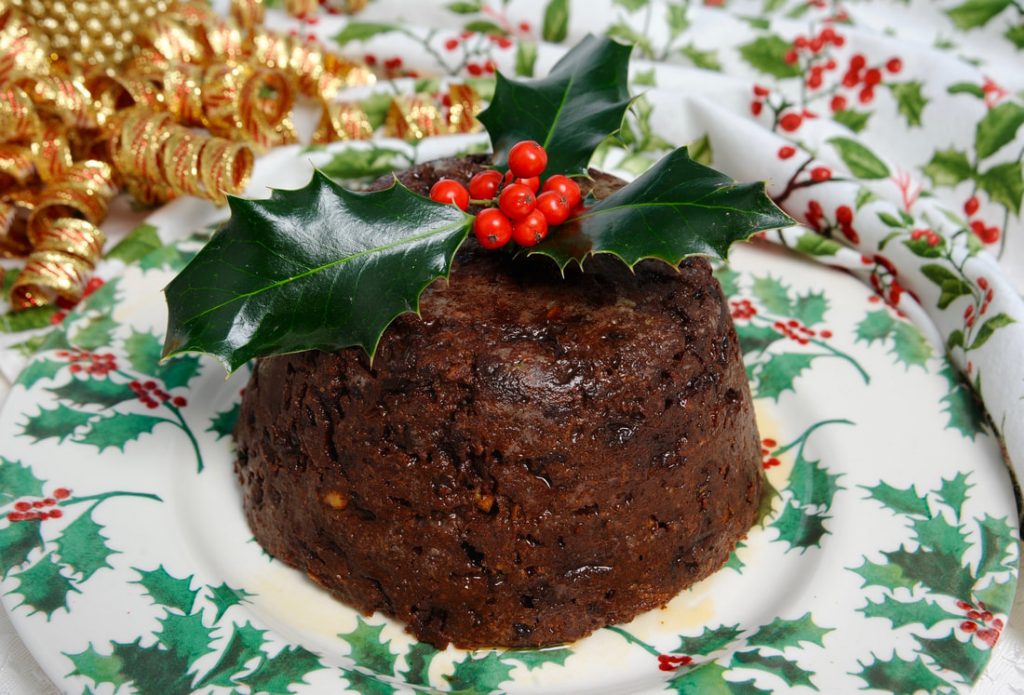
Hello!
Nice presentation…it looks delicious!😋
From Mitzy – Cooks Cook Community Forum (Facebook)
Thank you darling!
Smells and tastes absolutely divine. Just go ahead and make a pudding or two, then you’ll see for yourself!
Miss Windsor XXX
Miss Windsor,
In a recent visit to the kitchen of Mrs Crocombe’s at Audley End I made mention of the inclusion of coconut in the aforementioned pudding.
Imagine my surprise when my genteel hostess proceeded to chase me about the kitchen with a tapered rolling pin of French origin.
My escape from almost certain doom obtained due in part to the remarkably coincidental entry of the neighbors milk cow entering the kitchen through the door that had been accidentally left open after the days delivery from the local poulterer. Count my blessings I did, and gave up coconut for good.
Merry Christmas to you Darling. May your coconut remain…intact. Always.
Hello, darling!
It sounds like you had a blast in Mrs Crocombe’s kitchen!
Oh dearie me, such a shame that you’re put off of coconut for good, as my recipe requires a jolly good helping of coconut.
A merry Christmas to you too my dear culinary fellow!
Miss Windsor 🎅🌺🇬🇧🍰🎄
Oh, yes, my coconut always remains intact – thank you very muchly for your concern! 😆
Hello. I was going to make one this year! But it sounded way too complicated for this busy season (for me)
Looks delightful tho! x
Hello, there!
Such a shame you didn’t. It’s not complicated at all. All the ingredients go into one bowl, give it a good ol’ stir, then into the pudding basin. Only thing is, one will need to spare 4 to 5 hours of one’s time to top up the water whilst it steams!
Merry Christmas 🎅🌺🇬🇧😍🎄
Wow! Can’t wait to try and make this classic pudding. Many months to go, but I could make it in advance like you suggested.
I really like how you reinvent Mrs Beeton’s recipes.
Well done.
Hello, darling!
Well, I do wonder if you had a go at my recipe? If so, I hope it was a culinary triumph, and that you’re looking forward to devouring a pudding or two over the festive season!
Miss Windsor XX
Seasons greetings to you!!
I was reminiscing to my daughter about how my mothers Christmas pudding was the BEST EVER and that it came from an old battered copy of Mrs Beeton’s. So I did a google search and found your blog.
I was so happy to see the actual recipe that my mother used. I can remember reading it and marking off the ingredients and I can still taste the pudding served with hot custard or cold cream on Christmas day. I have never had another pudding so delicious since.
She went by the recipe, getting a hunk of raw suet from the butcher and grating it coarsely. She always used the almonds but chopped and never the coconut. Brandy – not rum. We used to take it in turns to stir with a wooden spoon and make a wish. We added pressed silver trinkets and real old silver sixpences. What a fun tradition.
She split and steamed the recipe as described but between about 5 basins of various size. We made them in November and would get one out (suitably matured) at various times during the year when it was cold and we had roast leg of lamb or such.
My Mum passed 4 years ago aged 90. It has been about 25 years since I had one of her puddings. Thank you Mum for the love and care that you brought into the kitchen and taking such good care of us. Here’s to you and all other loving caregivers at Christmas.
Thank you Miss Windsor for this wonderful trip down memory lane.
Yours, Christina Clark. (In memory of Betty from Essex)
Dear Christina Clark!
I’m beaming from ear to ear like a Cheshire cat after reading your wonderful comment! Thank you, darling.
First off, I’m chuffed to bits that you joined Miss Windsor on a glorious festive trip down memory lane – you now have Mrs Beeton’s recipe once again which I’m sure will forever ignite fond memories of your beloved mother Betty from Essex.
I say, I thoroughly enjoyed reading about your culinary past, and I’m so pleased that my quest in ‘bringing food history alive’ prompted you to reminisce about the ‘good ol’ days’ with Mother Betty.
I hope, in memory of your mother, that you’ll give Mrs Beeton’s recipe a jolly good go one day soon. And please do call on me if you need any further assistance – as you can see I’m quite a ‘dab hand’ at Christmas puddings!
Darling, it’s an absolute pleasure to meet you here. Please do pop by again soon.
In the meantime, I wish you a very merry Christmas and a rather spiffing New Year!
Cheerio for now,
Miss Windsor XXX